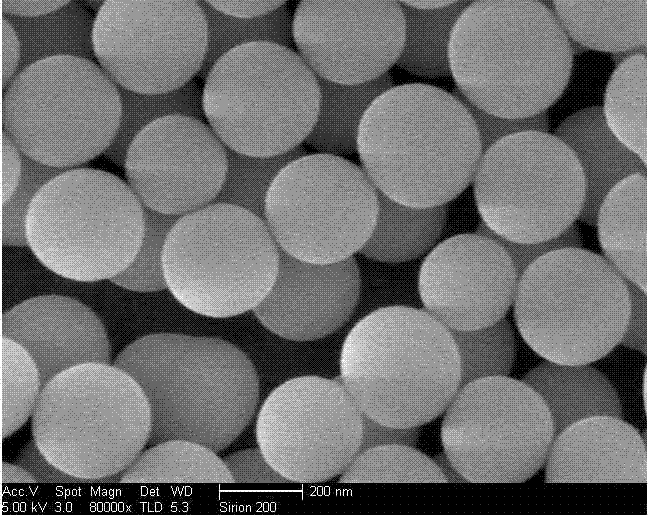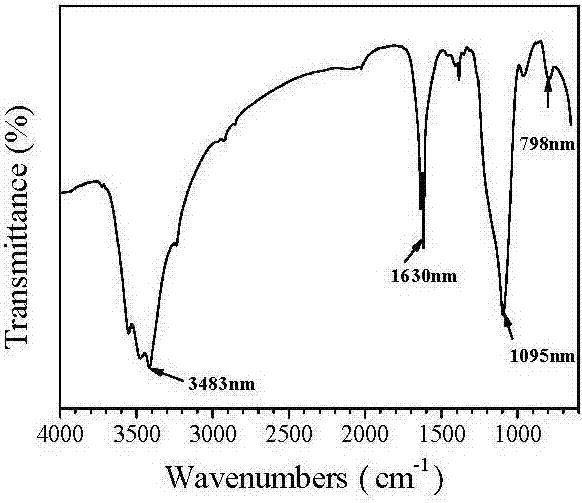Method for preparing SiO2@ROX nanoparticle fluorescent probe array for detecting malachite green
A nanoparticle and fluorescent probe technology, applied in the field of material science, can solve the problems of recycling, no identification group, difficult to control the size of aerogels, etc., to reduce production costs, form difficulty, and improve production safety. sexual effect
- Summary
- Abstract
- Description
- Claims
- Application Information
AI Technical Summary
Problems solved by technology
Method used
Image
Examples
preparation example Construction
[0046] A kind of SiO that detects malachite green 2 The preparation method of @ROX nanoparticle fluorescent probe array is characterized in that: the SiO 2 The surface of the fluorescent particles of @ROX has aminopropyl groups, and the aminopropyl groups on the surface can further interact with malachite green target molecules, making the electron-rich aminopropyl groups on the surface act as electron donors and electron-deficient malachite green acceptors. A blue-green complex is formed between them through charge transfer, and this blue-green complex can absorb SiO through fluorescence resonance energy transfer 2 The red fluorescence of the @ROX nanoparticle fluorescent probe array uses the change of fluorescence intensity to realize the detection of malachite green. The SiO 2 The preparation process of @ROX fluorescent probe includes the following three steps:
[0047] The first step is the preparation of the ROX-APTS precursor: First, accurately measure 10 mL ~ 12 mL ab...
specific Embodiment
[0051] According to the covalent coupling reaction, the ROX-APTS conjugate was prepared as a precursor, and the surface of SiO rich in aminopropyl groups could be synthesized by sol-gel reaction 2 @ROX Nanoparticle Fluorescent Probes Prepared on SiO by Plasma Etching 2 @ROX nanoparticle fluorescent probe array.
[0052] The first step is the preparation of the ROX-APTS precursor: First, accurately measure 11 mL of absolute ethanol, 2 mL of 3-aminopropyl triethoxysilane (3-aminopropyl triethoxysilane, APTS), and 200 μL of 5-carboxy -X-rhodamine succinimidyl ester (5-Carboxy-X-rhodamine N-succinimidyl ester, ROX) was placed in a 50 mL single-neck ground flask, then 2 mL of deionized water was added, and the above single-neck ground The flask was stirred at 600 rpm to 700 rpm at room temperature for 11 h in the dark, and finally a red solution of ROX-APTS precursor containing excess unreacted APTS was obtained;
[0053] The second step is the surface modification of ROX dyes an...
PUM
 Login to View More
Login to View More Abstract
Description
Claims
Application Information
 Login to View More
Login to View More - R&D
- Intellectual Property
- Life Sciences
- Materials
- Tech Scout
- Unparalleled Data Quality
- Higher Quality Content
- 60% Fewer Hallucinations
Browse by: Latest US Patents, China's latest patents, Technical Efficacy Thesaurus, Application Domain, Technology Topic, Popular Technical Reports.
© 2025 PatSnap. All rights reserved.Legal|Privacy policy|Modern Slavery Act Transparency Statement|Sitemap|About US| Contact US: help@patsnap.com



